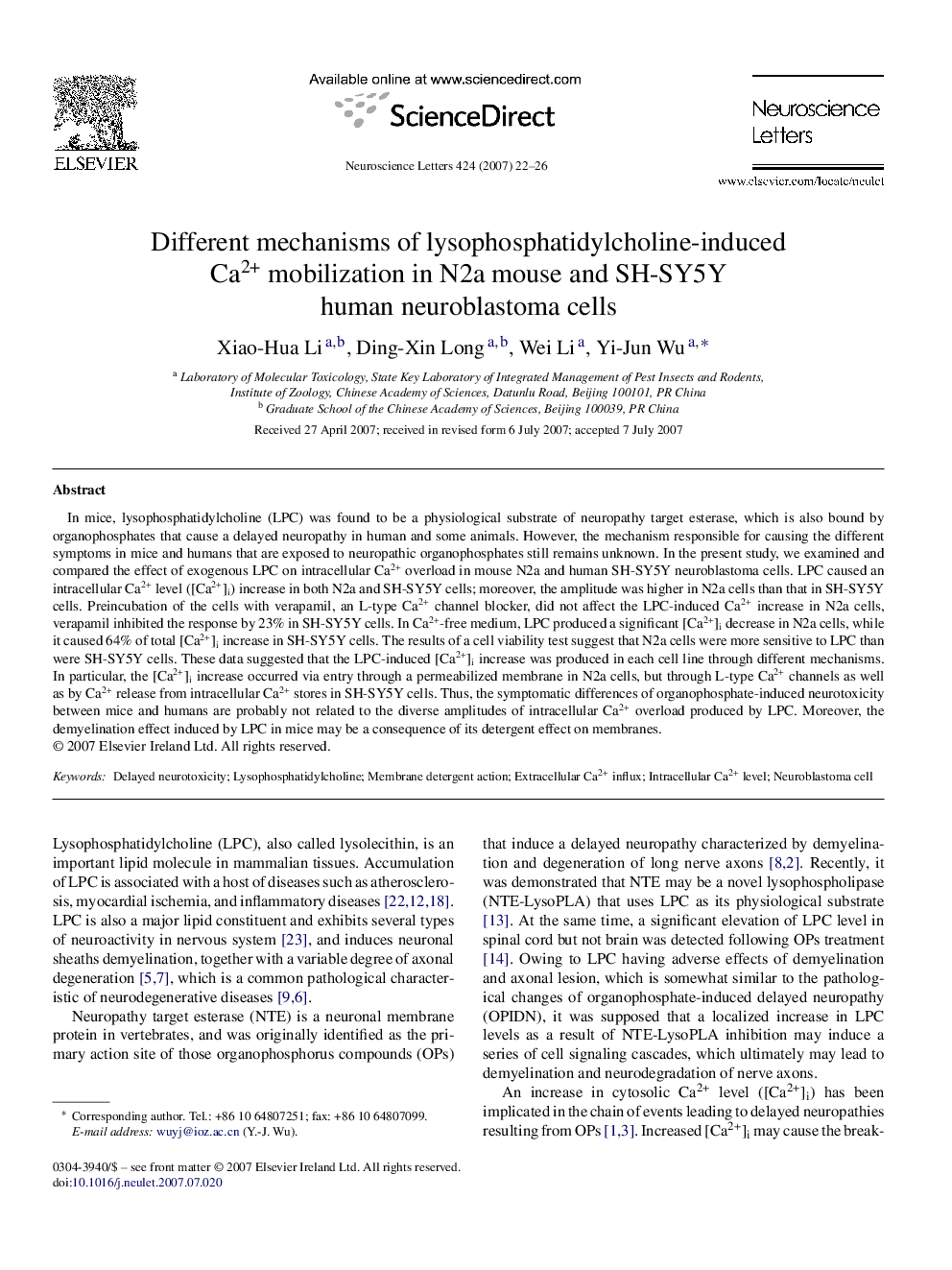| Article ID | Journal | Published Year | Pages | File Type |
|---|---|---|---|---|
| 4349269 | Neuroscience Letters | 2007 | 5 Pages |
In mice, lysophosphatidylcholine (LPC) was found to be a physiological substrate of neuropathy target esterase, which is also bound by organophosphates that cause a delayed neuropathy in human and some animals. However, the mechanism responsible for causing the different symptoms in mice and humans that are exposed to neuropathic organophosphates still remains unknown. In the present study, we examined and compared the effect of exogenous LPC on intracellular Ca2+ overload in mouse N2a and human SH-SY5Y neuroblastoma cells. LPC caused an intracellular Ca2+ level ([Ca2+]i) increase in both N2a and SH-SY5Y cells; moreover, the amplitude was higher in N2a cells than that in SH-SY5Y cells. Preincubation of the cells with verapamil, an L-type Ca2+ channel blocker, did not affect the LPC-induced Ca2+ increase in N2a cells, verapamil inhibited the response by 23% in SH-SY5Y cells. In Ca2+-free medium, LPC produced a significant [Ca2+]i decrease in N2a cells, while it caused 64% of total [Ca2+]i increase in SH-SY5Y cells. The results of a cell viability test suggest that N2a cells were more sensitive to LPC than were SH-SY5Y cells. These data suggested that the LPC-induced [Ca2+]i increase was produced in each cell line through different mechanisms. In particular, the [Ca2+]i increase occurred via entry through a permeabilized membrane in N2a cells, but through L-type Ca2+ channels as well as by Ca2+ release from intracellular Ca2+ stores in SH-SY5Y cells. Thus, the symptomatic differences of organophosphate-induced neurotoxicity between mice and humans are probably not related to the diverse amplitudes of intracellular Ca2+ overload produced by LPC. Moreover, the demyelination effect induced by LPC in mice may be a consequence of its detergent effect on membranes.
